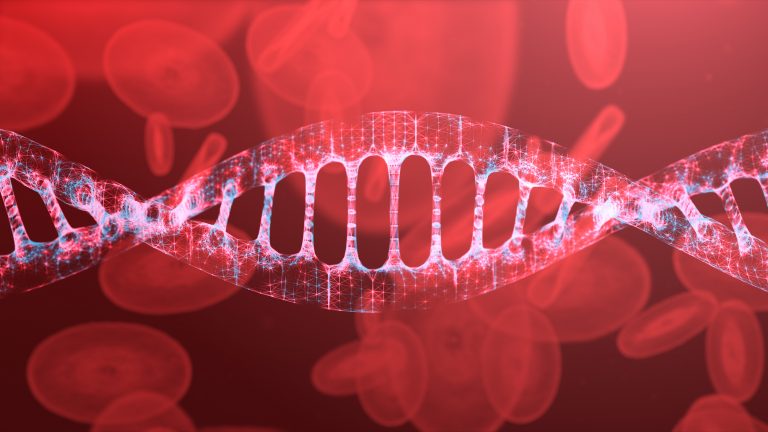
A new nanopore sensing technique, using a tiny glass tube and electric current, developed by scientists from the University of California-Riverside could provide a better way to capture DNA from fluid samples such as blood and improve cancer diagnosis in the future.
The technique was described recently in the paper “Measuring trapped DNA at the liquid-air interface for enhanced single molecule sensing” published in Nanoscale.
“Nanopore sensing is a promising tool with widespread application in single-molecule detection. Borosilicate glass nanopores are a viable alternative to other solid-state nanopores due to low noise and cost-efficient fabrication. For dielectric materials, including borosilicate glass, the capacitive noise is one of the major contributors to noise, which depends on the wall thickness and the surface area submerged in an ionic solution,” write the authors of the journal article.
“Here, we investigated the root mean square (IRMS) noise and ionic conductance for borosilicate nanopores in different depths (i.e., tip submersion depth) ranging from the solution surface (assumed to be zero) to 5000 μm. Our findings demonstrate a decrease in IRMS noise as the pipette moves toward the surface. We further demonstrate that borosilicate nanopores can detect single lambda DNA (λ-DNA) molecules with a high signal-to noise ratio close to the liquid-air interface. Specifically, our results indicate a higher signal to noise ratio as the submersion depth is reduced owing to the reduced surface area and thus capacitive noise. Further, our experimental results show higher DNA capture frequency at the air–water interface due to a combined effect of evaporation and an evaporation-induced thermal gradient at the surface.”
“Therefore, our findings demonstrate that borosilicate glass nanopores are suitable for studying interfacial concentration gradients of molecules, specifically DNA, with a higher signal to noise.”
DNA, an electrically charged molecule, is tightly folded within the cell nucleus. Extracting the DNA from a single cell is time consuming and impractical for many medical and scientific purposes. But as cells die naturally, their membranes burst, releasing the contents, including DNA. This means that a blood sample, for example, contains many strands of free-floating DNA that should, in theory, be easier to identify and extract in quantity.
However, macrophages that clean up cellular waste destroy most cell-free DNA, leaving it at low concentrations in the blood. Most approaches to capturing cell-free DNA require expensive techniques that first concentrate the molecules before using fluorescent dyes to help see the DNA.
Kevin Freedman, PhD, an assistant professor of bioengineering at UC Riverside’s Marlan and Rosemary Bourns College of Engineering, led an effort to improve detection and capture of DNA at lower concentrations by using an electric charge to direct a DNA sample directly into a glass tube with a tiny opening (a nanopore). Nanopore sensing has emerged as a fast, reliable, and cost-effective diagnosis tool in different medical and clinical applications.
“We know that if you apply voltage across a cell membrane, ions will move through pores in the cell membrane,” Freedman said. “DNA also travels with the electric field, and we can use it to move the DNA.”
The researchers put a positive electrode inside a glass tube with 20 nanometer-wide pore—slightly larger than a DNA molecule but too small to admit cells. They applied an electrical potential to the nanopore, which was dipped into a vial containing a DNA sample and a negative electrode. The cell-free DNA moved into the pore and blocked it. The change in electrical current as the DNA traveled through the pore allowed the researchers to detect it.
“It’s like trying to pull spaghetti through a needle,” Freedman said. “To go through the pore it has to be almost perfectly linear.”
The closer to the liquid surface the researchers held the pore, the more DNA it picked up.
“Amazingly, we found that DNA accumulates at the liquid-air interfaces. If there is a cooling layer, the DNA will try to go to the cooler location,” explained Freedman. “We hope the same is true for a blood sample, so the same mechanism can be used to concentrate DNA near the surface. Not only is this beneficial, but this nanopore-sensing strategy demonstrated a higher signal-to-noise ratio near the surface as well. It is really a win-win situation.”
With some refinements, the authors think their purely electric technique could help diagnose some kinds of cancer from a single blood sample. In addition to DNA, as tumors grow, vesicles are released into the blood stream. These mini lipid-based droplets can be thought of as mini-cells that are identical to the original cancer cells and could also be detected by nanopore sensing.
Considering all the features of this purely electrical technique, the nanopore-sensing system has the potential to be utilized as a point-of-care diagnostic test evaluation in the future.











